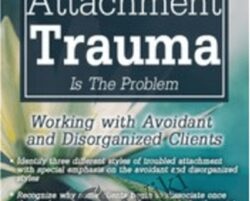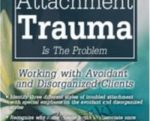Many clients bring to therapy the remnants of attachment wounds experienced before they learned to speak, so talk therapy is often ineffective at getting to the root of early memories that can continue to roil emotions and disturb relationships. This workshop presents a unique approach to correcting insecure attachment through specific corrective experiences that address the emotional injuries they incurred in early life. Through experiential exercises and videos of client sessions, you’ll see the profound effect of DARe (Dynamic Attachment Re-Patterning Experience) work in action. You’ll focus on how to:Identify three different styles of troubled attachment with special emphasis on the avoidant and disorganized stylesRecognize why some clients begin to dissociate once they’ve formed a positive attachment with the therapist and why empathy can backfireEnhance your skills for creating a safe haven and secure attachment bond by becoming more sensitive to clients’ nonverbal, relational, and somatic cuesIncrease your capacity for intersubjectivity and incorporating well-timed humor and playfulness in your styleFocus on how to identify three different styles of troubled attachment with special emphasis on the avoidant and disorganized stylesFocus on how to recognize why some clients begin to dissociate once they’ve formed a positive attachment with the therapist and why empathy can backfireFocus on how to enhance your skills for creating a safe haven and secure attachment bond by becoming more sensitive to clients’ nonverbal, relational, and somatic cuesFocus on how to increase your capacity for intersubjectivity and incorporating well-timed humor and playfulness in your style1.Therapeutic Presencea.Advantagesb.Disadvantages2.The Role of family in Attachment Style Development3.Styles of Attachmenta.Secureb.Avoidantc.Ambivalentd.Disorganized4.Defining Secure Attachmenta.Tone of Voiceb.Safetyc.Protectiond.Humore.Relaxationf.Self-Regulation5.Secure Attachment Strategiesa.Repairing Mis-attunementsb.Repair Ritualsc.Secure Primingd.Synaptic Sculptinge.Kind Eyes Exercisef.Affect Modulationg.Regulating the Nervous Systemh.Reversing the Freeze Responsei.Somatic Strategies (D.A.R.e.)6.Neuroscience & Neuroplasticitya.The science of what helps us connectb.The Fluidity of Memoryc.Impact of Abuse on the brain7.Being sensitive to client cuesa.Nonverbal cuesb.Relational cuesc.Somatic cues8.Sadistic Abuse9.Trauma Resolution10.Video Vignettes of Complex Trauma TreatmentGet When Unresolved Attachment Trauma Is the Problem: Working with Avoidant and Disorganized Clients of author Diane Poole Heller only price 44$Tag: When Unresolved Attachment Trauma Is the Problem: Working with Avoidant and Disorganized Clients – Diane Poole Heller Review. When Unresolved Attachment Trauma Is the Problem: Working with Avoidant and Disorganized Clients – Diane Poole Heller download. When Unresolved Attachment Trauma Is the Problem: Working with Avoidant and Disorganized Clients – Diane Poole Heller discount.
 Excel 2016 Formulas – Michael Alexander & Others
₹3,818.00
Excel 2016 Formulas – Michael Alexander & Others
₹3,818.00
 Working the Edge in Healing Trauma: Can Therapy Sometimes Be Too Safe? – Diane Poole Heller
₹6,640.00
Working the Edge in Healing Trauma: Can Therapy Sometimes Be Too Safe? – Diane Poole Heller
₹6,640.00
When Unresolved Attachment Trauma Is the Problem: Working with Avoidant and Disorganized Clients – Diane Poole Heller
₹6,640.00




